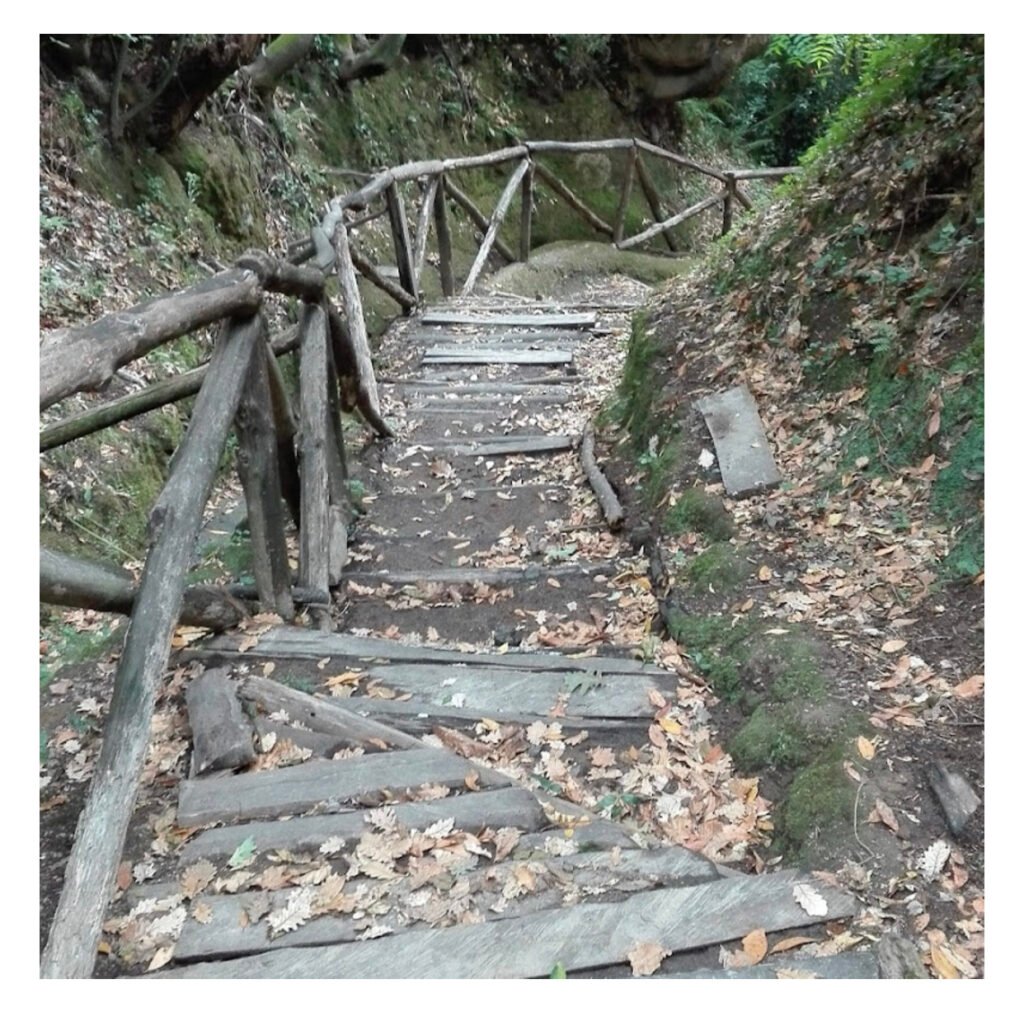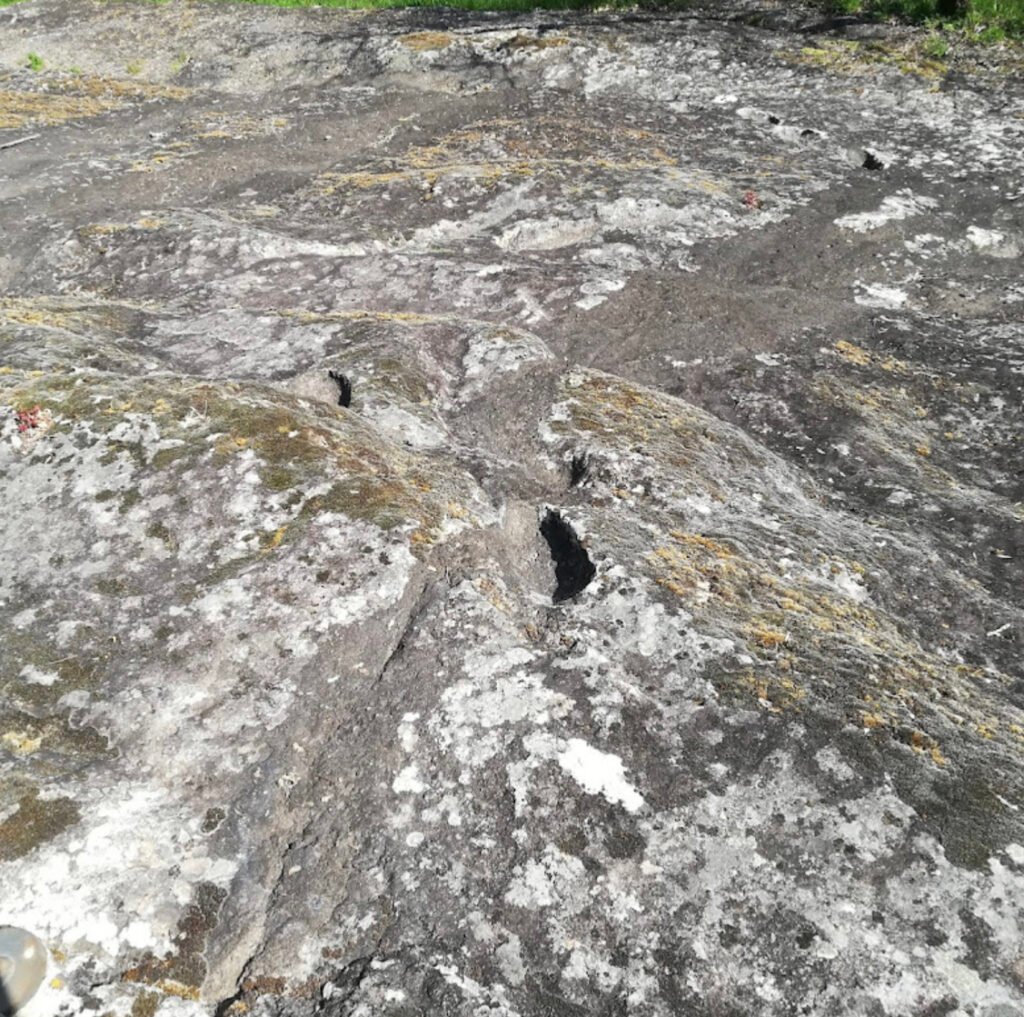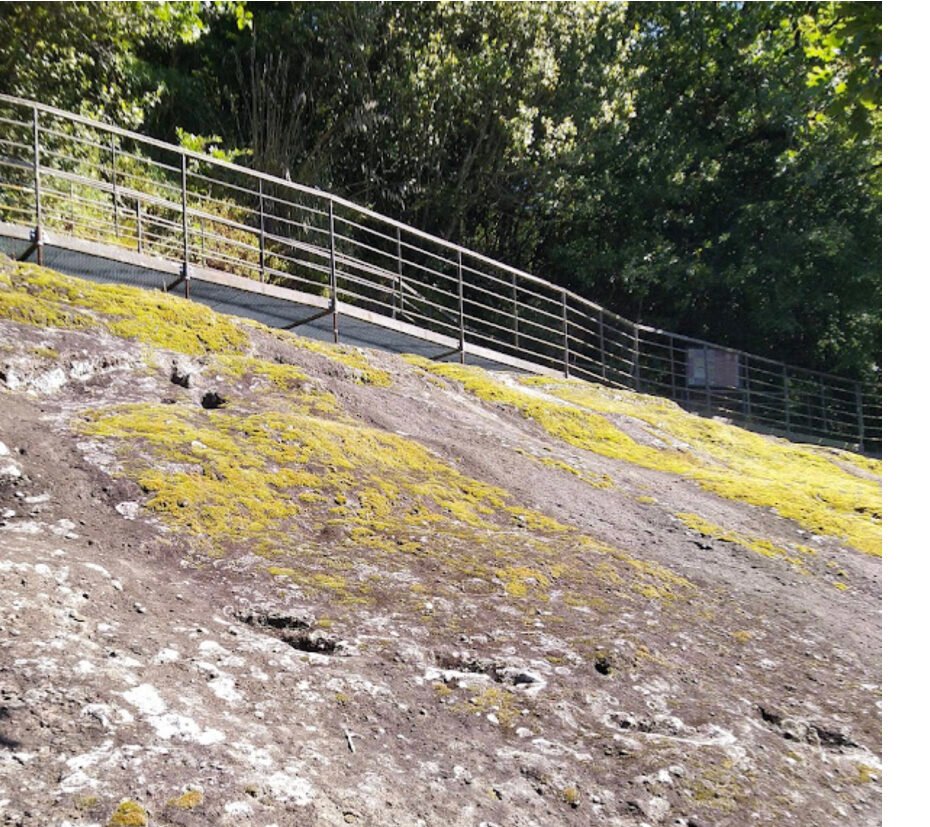Those who don’t know Italy well should know that there is no country or village – however small – that doesn’t feature a church, monument, scenic landscape or other remarkable attraction that deserves to be visited.
I would like to tell you the story of how I discovered the extraordinary Ciampate del Diavolo, or “Devil’s Footprints,” paleontological site, an area with fossils of great scientific value.
It is tucked away in a little village, Tora e Piccilli, in the southern Italian area of the Roccamonfina extinct volcano. It preserves the oldest known footprints of Homo Heidelbergensis, one of the earliest extinct species of human beings who lived around 350,000 years ago.
A real life fairytale
How do I get out of a postcard? The more one proceeds towards the intriguing destination, the more it seems to be tucked inside a postcard of hills surrounded by dense and verdant vegetation. The first time I went there, I thought, “It’s a real postcard!”
I found myself right inside a very ancient legend; everything around me was magical and fabulous. When I got there, I even exclaimed, “It’s a fairytale!”
That place, hidden in the wood, was a secluded corner from the world whose treasure chest was truly priceless – full of precious prehistoric footprints. The footprints, imprinted in the rock, took me back in time to my primordial memories – those that we all certainly have imprinted in our DNA.

The road taking me to the site was winding and wild. The trees in the dense forest all around me seemed like they were speaking to me, heralding the wonderful spectacle that was about to appear before my eyes. The nature that surrounded this magical place was a triumph of harmony; the potent aroma of the dense vegetation, the bright colors of the large and centuries-old oaks and chestnut trees, the sweet song of the nightingale sounding like music to my ears, and the whistling of the wind making me fly with my thoughts.
A step back into history
To get there, I travelled down a long path, an old mule track that was used by the locals in the past to reach a mill where they grinded their cereals. Suddenly, as if by magic, a huge boulder appeared before my eyes where I could admire the fossil footprints of my ancestors.
These treasured remnants of the past are preserved on the surface of the rock called “tuff,” a light porous rock formation made of volcanic ash. In the eruptive phase of the Roccamonfina volcano and certainly in that area, hominids and animals walked, leaving their tracks behind them.

As an old folk tale has it, a series of torrential rains caused landslides in the early nineteenth century. The local generations that came before me interpreted the uncovered marks as the Devil’s footprints. In their opinion, only the Devil was able to walk along incandescent volcanic materials without burning himself, so the legend of the “Ciampate del Diavolo” was born.
Visiting that evocative, atmospheric and stunning place was without a doubt a real time travel experience for me, so I would strongly recommend a visit. I think that the best way to find ourselves is through researching our origins.
A site with many stories
A bittersweet story, which touched me in particular, is the one I heard when I first visited the site. It starts in the middle of the German occupation, during World War II.
It was the year 1943. The locals put their lives at risk with the sole goal of saving Jewish people in the vicinity of the village and preventing them from being betrayed to the Germans. They steadfastly refused to trade the refugees’ safety for mere privileges.

During this time, Tora’s inhabitants, with its families and Jewish people all fighting to survive, made “Devil’s Footprints” their shelter. They transformed that harsh environment into their temporary home.
Today, 77 years later, us Italians honor those who bravely sacrificed themselves with no regrets in the name of humanity. It seems like the resemblance of Tora, the village’s name, to the Hebrew word “Torah,” the Sacred Law, was written in the stars. I consider it a very significant and touching coincidence.
See the footprints for yourself
Visiting the “Ciampate del Diavolo” is easy. The locals, proud of their ancient footpath, have created an inviting nature park around it. It is kept locked, except to official tour guides from the Orme Cultural Association, who accompany visitors. They are the true guardian angels of the site. With their rare friendliness and compelling stories, they enable the beauty in the “Ciampate del Diavolo” to come out of the rocks.
Entrance to this unique site is solely through the Orme Association, whose inspiring staff members will guide you during your visit. You’ll be able to enjoy the park, inhale the nature that surrounds you, and learn a little more about the locals and yourself.
Thank you to Brooklyn Riepma and Julianna Wages for their inspired edit on this piece and everyone else on the Lifestyle & Relationships team.
If you are interested in submitting a piece to the DG Sentinel, please visit our submissions page here.
